We’ve all been there. You have primed and prepped your face for flawless makeup coverage, and then you see it. Your makeup has started collecting on dry patches. Leaving your flakes more noticeable and your confidence has gone out the window.
There are many types of products you can use as a natural exfoliator, with ingredients like baking soda, that you can use to help even out your skin from head to toe. Some of them might already be in your cupboard now.
Which Are the Natural Exfoliators?
Use Salt as a Natural Exfoliator
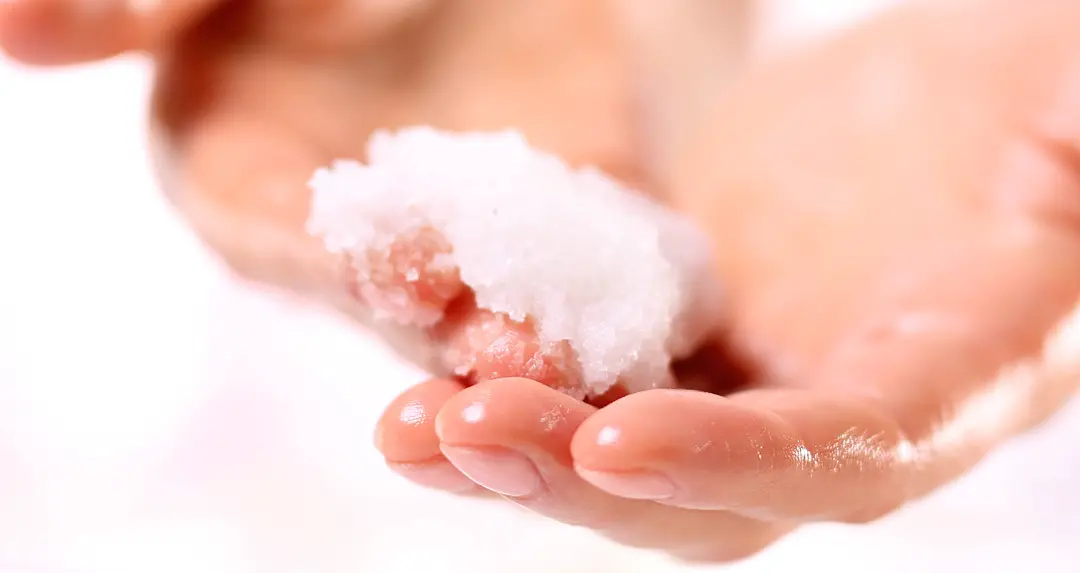
Salt has been used for centuries as a natural exfoliator. It forms naturally in cube shapes, which creates sharper edges all around. This makes it perfect for hard calloused areas like your hands and feet.
Never use this harsh body scrub on your delicate face though, you could end up with burns and irritated inflamed skin.
Another benefit of using salt is that it is chock-full of minerals depending on what type of salt you use.
Sea salt and Himalayan salt are some of the most popular types. Never use just table salt, as it doesn’t have any remineralizing properties to it.
Also worth reading: All Natural Beauty Tips
Use Sugar For More Delicate Areas

Sugar is a great natural exfoliator for more delicate areas of the body, like your face and bikini area.
The sugar easily dissolves in warm water, so it has less of a chance of irritating the skin. While sugar is dissolving, it produces glycolic acid which helps with maintaining moisture.
The mildness of sugar makes it great for using more frequently than other harsher exfoliators.
Use Oatmeal for Eczema
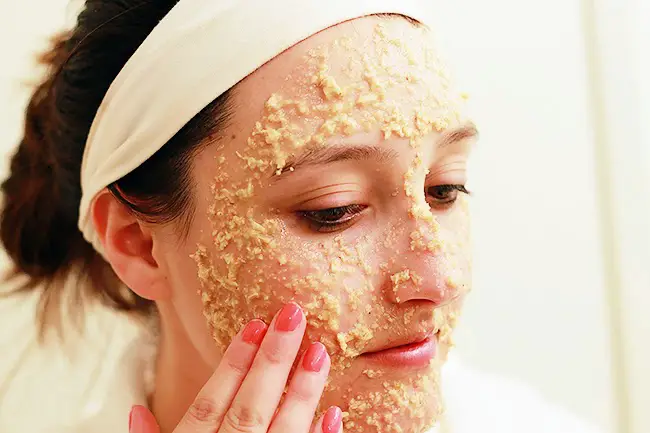
Ground oatmeal makes an excellent exfoliator for people with sensitive skin, eczema, or inflammation of any kind.
Using organic oatmeal has healing and calming properties in it that will help nourish all the fine lines and moisturize all in one.
It is safe to use all over the body and can be mixed with sugar to give it a little more texture if desired.
Use Coffee Grounds To Fight Against the Cellulite
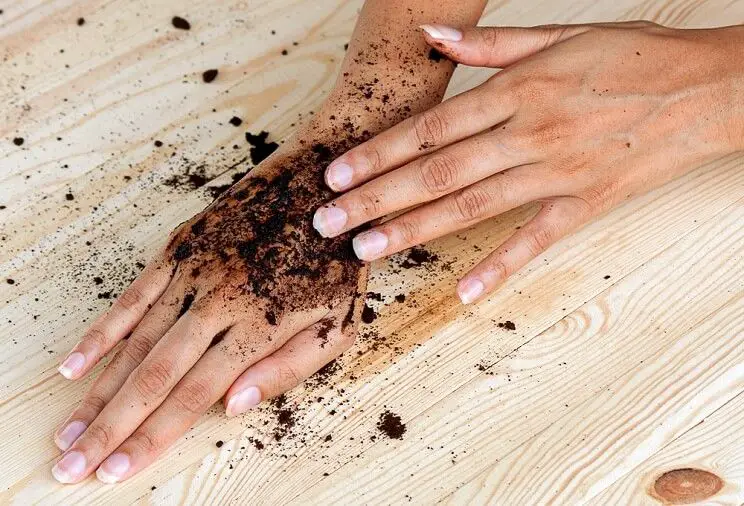
Coffee has caffeine that will energize your skin, and it’s a great part to have it in your new skin care routine. This natural exfoliator is especially useful for areas with cellulite.
If used on the face, it could also even out skin tone and make you look more awake to give you a natural glow. Just be sure to keep it away from your eyes and eyelids.
Use Apple Cider Vinegar For Loosening Dead Skin Cells
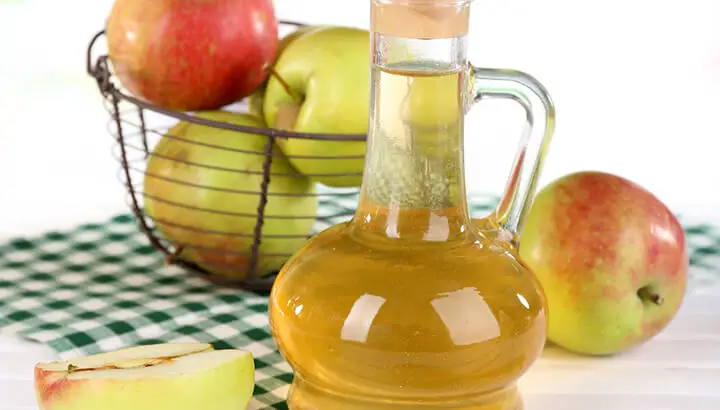
This one is one of the best natural “cures”, that works in a little different way than the previously mentioned abrasive type exfoliators.
Raw, unfiltered apple cider vinegar has naturally occurring alpha-hydroxy acids. This is great for loosening dead skin cells so that they will come off with a warm washcloth.
Just rub the apple cider vinegar over your face after your regular washing routine.
Use Rice Flour For Lightening of Acne Scars

Rice is a very cheap and accessible food source all around the world. And because of this, it has had numerous uses in the beauty world too.
Rice flour has been used for centuries because of the minerals and proteins found in it. It can leave your face looking brighter, lighten acne scars, and since rice is absorbent, it can reduce oily skin.
Use Under-ripe Papaya For Reduction of Winkles
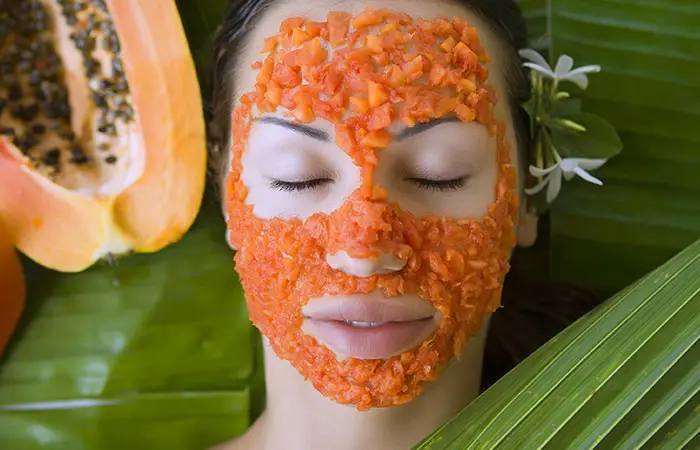
Papaya has a high enzyme called papain. Papain dissolves dead skin cells in much the same way that apple cider vinegar does, but without the sour smell.
It helps to exfoliate and reduce the look of scars, fine lines and wrinkles. But, this can only be done with papaya that has not ripened yet.
So pick up a few green ones to mash and use it as a face mask and rinse with warm water.
Use Whole Milk for Smooth Skin

Whole milk has lactic acid, which makes it a great face mask and helps to exfoliate and the fats found in milk will moisturize — killing two birds with one stone.
This is an excellent option for people with susceptible skin since there are no abrasives to irritate and cause a reaction. Whole milk will leave your skin feeling plump and ever so smooth.
Hydration is Key
After all of these methods, it is highly recommended to use a good quality moisturizer. Exfoliating in any form will leave new delicate skin exposed.
Moisturizing will help keep this skin soft and will reduce any irritation that might occur. If proper moisturizing hasn’t been done, you run the risk of sinking into an endless cycle of dry skin.
These are just a few of the most used natural exfoliators used around the world. Clearer, softer skin is possible for everyone. You just have to know where to look.
Best Ingredients for Preparing Homemade Face Masks
If you were looking into how to make a homemade face mask, you should know that it is easier than you thought, and you only need ingredients that most of us already have in the kitchen.
While you can undoubtedly find face masks in all shops, the DIY face mask is simple and convenient. You can ensure it contains all-natural ingredients, and it costs probably less!

It is important to understand that when it comes to a homemade face mask or DIY face mask, there is no one size fits all.
As it is the case with the rest of the cosmetics you use, the best face mask for you has to be suitable for your skin type.
Then, your skin will glow, look healthy, and you will look younger!
If you have a dry skin type, make sure to choose ingredients that will provide hydration without drying the skin furthermore.
For oily or combination skin, the recommendation is to avoid ingredients that can lead to clogging the pores or intensifying the activity of the sebaceous glands.
For skin prone to pigmentation and spots, there are a few whitening ingredients that are 100% natural and can do the trick.
For sensitive skin, use only ingredients that are gentle with your skin and don’t cause irritation or redness.
A face mask that is suitable for all skin types and can considerably increase the level of skin hydration is the one made with honey and avocado.
Honey and Avocado
Step#1: Pick an organic, ripe avocado and peel off the skin. Cut it in half, and you will only need half of it for the face mask (the other half you can have on a piece of toast with tomatoes on top for a delicious snack).
Step#2:With a fork or in a blender, turn the avocado into a puree. Add three teaspoons of honey and mix.
Step#3:You can apply the mask after getting a shower, morning, or evening. Make sure to clean the face properly before applying the mask.
The recommendation is to do it after the shower as the warm water will open the pores and make the mask even more efficient. Leave the mask on for about 15-25 minutes, then rinse it with warm water.
You can use a cotton pad to help you remove all the leftovers. With this mask, the only real challenge will be not to eat it while still on your face as the smell is delicious! Very tasty too!
Honey and Lemon
Honey is a popular ingredient for many DIY face mask recipes. When you mix it with freshly squeezed lemon juice, it can help you revitalize dull and tired skin.
Step#1: What you need to do is mix two teaspoons of honey with the juice from half a lemon.
Step#2: Apply the mask and let it work for about 15 minutes. Then rinse with warm water and apply your regular moisturizer.
Lemon and Tomatoes
The acids in the lemon juice have a delicate peeling like effect on the skin. It will remove the dead skin cells from the level of the skin.
The vitamin A, C, and lycopene from the tomatoes are amazing antioxidants that can revive tern skin and normalize the skin pH.
These ingredients can also help with eliminating the excess sebum so that you can use them on oily or combination skin.
Step#1: Use the blender to puree half of a ripe, small size tomato.
Step#2: Add in the juice from half a lemon.
Step#3: Apply on the face with the help of a brush.
Step#4:Apply several layers and wait for 15-20 minutes, then rinse with warm water.
Conclusion
With as few ingredients as some honey, lemon, avocado, and tomatoes, baking soda you can create different DIY face mask recipes that will give your skin the glow it lacks now.
You can also try olive oil for dry, dull skin or grape seeds oil for oily skin.
Sources
Salt or Sugar: Best for Scrubs? – Happi
5 Ways to Get New Skin – MNN
The 8 Best All-Natural Face Exfoliators – SioBeauty
13 Must-Follow Recipes for the Perfect Homemade Face Mask – The Healthy
Homemade Face Masks for 6 Different Skin Conditions: Recipes, Benefits, How to Use – Healthline




